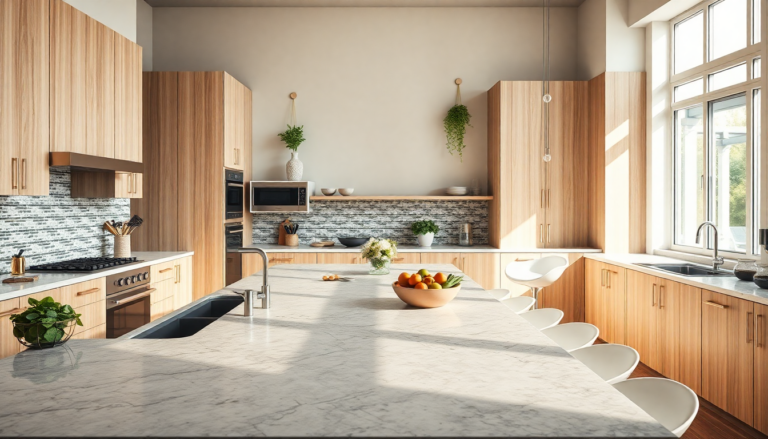Designing a kitchen isn’t just a task—it’s an art form that blends style with functionality. Have you ever found yourself in a kitchen that looks amazing but is a total nightmare to cook in? That’s often the result of overlooking some key design principles. In this article, we’ll explore common missteps that even the pros caution against, ensuring your kitchen is both stunning and practical for your everyday life.
Why Layout Matters
At the heart of a great kitchen design is the layout. Picture this: you’re trying to whip up a meal, but your kitchen feels cramped and chaotic. The secret to avoiding this frustration lies in the “working triangle”—the relationship between your sink, stove, and refrigerator. This golden rule helps you maintain an efficient workflow, no matter the size or shape of your kitchen. Designers often recommend keeping these three essentials close together to streamline your cooking process and cut down on unnecessary steps.
From my time in the field, I can tell you that understanding how a client uses their kitchen is absolutely crucial. By listening to their habits and preferences, you can create a layout that truly fits their lifestyle. For instance, if someone loves to entertain, you’ll want to ensure there’s enough room for guests to mingle while dinner is being prepared. It’s all about creating a space that feels right for its users.
Once you nail down the triangle, don’t forget about the importance of counter space next to your appliances. It’s a common frustration among designers when there’s not enough surface area to set down hot dishes or cooking utensils. Moreover, leaving a minimum of 42 inches between counters can significantly enhance the kitchen’s usability, making it a breeze to move around.
Choosing the Right Materials
When it comes to materials, choosing the right countertops is crucial. Many designers will tell you to steer clear of following trends without thinking it through. While quartz is low-maintenance, there’s something special about natural stone that simply can’t be replicated. Think of the elegance of marble, the durability of granite, or the warmth of butcher-block—each of these materials adds a unique character to your kitchen that manufactured options can’t match.
This idea isn’t just a passing trend; it’s about making choices that will endure and remain visually appealing through the years. Plus, let’s be honest—who doesn’t want a kitchen that feels timeless?
Another key factor is cabinetry. Designers often advise against leaving gaps between upper cabinets and the ceiling. Not only does this create an unfinished look, but it also becomes a magnet for clutter. That little space can quickly turn into a catch-all for decorative items, detracting from the clean lines you want in your kitchen.
Mastering Your Lighting Plan
Lighting is one of those elements that can truly make or break your kitchen. Relying solely on recessed lighting might leave your space feeling flat and uninviting. Instead, designers suggest a layered approach that combines task lighting, ambient lighting, and accent lighting. For example, under-cabinet lighting not only brightens work surfaces but also creates a warm, inviting atmosphere.
Have you ever noticed how different lighting sources can completely change the vibe of a room? A well-thought-out lighting plan enhances functionality while elevating the overall aesthetic. By mixing various light sources—from pendant lights over the island to thoughtfully placed sconces—you can craft a kitchen that’s both beautiful and functional.
In the end, the best kitchen designs seamlessly blend functionality with style. By steering clear of common pitfalls and focusing on elements that enhance both the look and practicality of your space, you can create a kitchen that you’ll love to use for years to come. Ready to get started on your dream kitchen?

